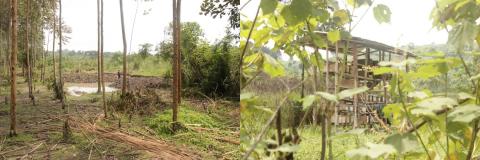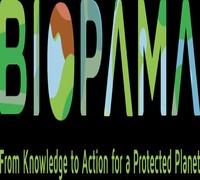BIOPAMA AC RAPID RESPONSE GRANT PROJECT

BIOPAMA AC Rapid Response Grant Project Title: Addressing threats to biodiversity and ecosystems services loss through ecotourism development – a case of massive and unregulated wetland destruction in and along Nzuguto wetland due to COVID-19 lockdown.
Key words Law enforcement Illegal activities Co-management Participation Livelihoods/alternative economic activities Ecotourism Ecosystem /habitat restauration Awareness/education Climate adaption/mitigation/resilience Project Budget: €49,986.20
Location: Rubirizi District, Southwestern Uganda
Duration : 1st June 2021 – 30th May 2022 Key Landscape(s) for Conservation NZUGUTO WETLAND, RUBIRIZI DISTRICT
The BIOPAMA AC Objectives Addressed • Support local communities’ initiatives aiming to enhance the livelihoods of local people whilst effectively contributing to protected areas management. • Enforce the legal framework required to achieve effective biodiversity conservation in PA (s) Priority Need Addressed The COVID-19 Lockdown has resulted into heavy reliance by community members in Rubirizi District on Nzuguto wetland products like papyrus for crafts, clay for brick laying, trees for fuel wood and charcoal, etc in search of survival. This has resulted into sharp wetland drainage cycle disruption, increase of vermins and problem animals like monkeys; excessive water, soil and vegetation loss in the wetland; posing a danger to hundreds of households who access the wetland for basic needs like water and services like climate modulation, air purification etc The proposed project interventions will directly contribute to sustainable livelihoods addressing key challenges like safe water access, alternative livelihood income sources, education / awareness on environmental protection and management, and ecosystem services/habitat restoration)
Project Activities: The activities of the project include the following:
-Wetland boundary demarcation by installing concrete mark stones to limit encroachment
-Wetland drainage cycle restoration to reduce water loss and support the rejuvenation of all forms of plant and survival of wetland animals
-introduction of fish farming activities along the wetland buffer and borrow pits left behind by brick making activities.
-constructing of clean water wells/springs and provision of rainwater harvesting tanks to limit wetland access.
-Restoration planting of indigenous plant species like papyrus in the degraded sections of the wetland
-Introduction of integrated pest management in wetland edge gardening (organic vegetable growing) to promote a healthy agro
-system and improve community livelihood options.
-Provision of Alternative income sources: beehives to the host communities, furnished fish cages to fishing groups on Lake Kamweru to reduce pressure on the crater and the wetland -improving tourism activities by establishing tourist nature walk trails, wetland boardwalk and tourist canoeing activities along the Kamweru crater.
-community sensitization on the best wetland edge agricultural practices and natural resource conservation awareness campaigns Change that the project activities will bring to the protected area
There will be overall recovery of the wetland biodiversity by reducing unnecessary wetland access, restoration of the degraded areas, and an improved and streamlined wetland management system. Water volumes in the wetland will increase which will be used to recharge the springs and the fish ponds. This will lead to natural regeneration of the vegetation within and an improved drainage cycle of the wetland. Indigenous plants as well as local medicines, and all forms of wild animals and avifauna will be preserved. Total surface area of the wetland will increase. Ecosystem services and benefits of the wetland will be restored. The interventions will directly contribute to sustainable livelihoods, hence reducing their dependency on the wetland, promote a better and healthy environment for both the people and the wildlife within, sustainable use of natural resources, and reduce negative environmental impact and climate change



